Coffee and Tea Cultures: Exploring Ritual Beginnings to Contemporary Café Scenes

Updated On: April 23, 2024 by Yomna Salah
Coffee and tea cultures have woven their way through history, becoming more than mere beverages; they are a symphony of cultures, rituals, and practices spanning the globe. These two beverages have shaped societies, fuelled dialogues, and spurred artistic and intellectual movements from their ceremonial origins to the buzzing modern cafés. Delving into their past, we find that coffee and tea hold profound places in the traditions and social fabric of many countries. Their consumption has become a significant part of daily life, reflecting the nuances of culture and identity.

As we trace the historical roots of coffee from the Ethiopian plateaus and tea from the lush fields of China, their journey to global dominance is marked by the spread of intricate customs and evolving social rituals. The coffeehouse and the teahouse emerged as central hubs of social interaction, promoting the exchange of ideas and fostering a unique community space. These establishments have undergone a significant evolution, culminating in the contemporary café culture that blends the love for these age-old brews with modern tastes and innovation.
Table of Contents
Historical Roots of Coffee and Tea
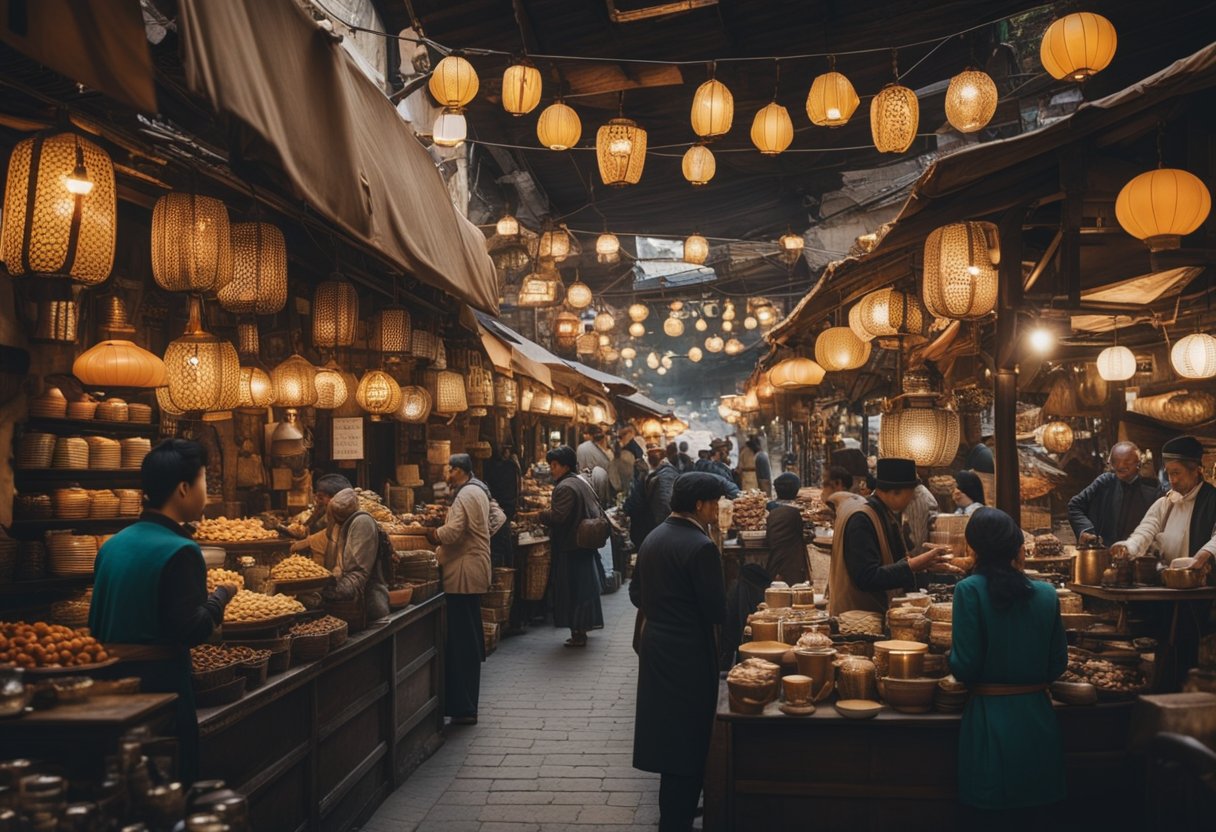
In tracing the roots of coffee and tea, we uncover a tapestry of cultural interactions and exchanges that span millennia and continents.
Origins in Ethiopia and China
The journey of coffee began in Ethiopia, with wild coffee plants, Coffea species indigenous to regions like Kefa. The story of Kaldi, an Ethiopian goatherd who noticed the energising effect of coffee berries on his flock, speaks to the accidental discovery of coffee’s properties. Drinking coffee later evolved in the Middle East, especially in Yemen, where the port city of Mocha became synonymous with coffee culture. For further details about the Ethiopian coffee origins, consider exploring the history of coffee.
Parallel to coffee, tea has its roots in China, with a history stretching back thousands of years. It emerged from medicinal beginnings to become a staple of daily life and ceremony. As an integral part of Asian culture, the art of tea has been meticulously refined over the centuries. Centuries-old traditions like the Chinese tea ceremony highlight the spiritual dimension of tea culture in China, which influences the surrounding regions in Asia.
Spreading Across Continents: Asia and Africa to Europe
Coffee’s expansion across continents began earnestly with its introduction to the Levante and from there to the broader Middle East. By the 15th century, coffee had reached the Ottoman Empire, aligning itself with social and religious customs. Ottoman Turks further transformed the beverage by roasting the beans, a technique that improved its flavour and aroma.
Tea followed a similar trajectory of cultural integration as it spread from China to other Asian nations. It was epitomised by the development of Japanese tea culture, which imparts the same meticulous care and respect as its Chinese counterpart. By the 17th century, both tea and coffee had made their presence felt in Europe, turning the tide on previously favoured beverages and signifying a shift in social customs and trade practices.
| Continent | Drink | Century of Arrival |
|---|---|---|
| Asia | Tea & Coffee | Various, ancient to 15th Century |
| Africa | Coffee | Ancient |
| Europe | Tea & Coffee | 17th Century |
In Europe, the allure of coffee and tea inspired the emergence of the café culture, a place for intellectual discourse and leisure, tangibly affecting the social fabric of societies for centuries to follow.
By exploring these historical threads, we gain a deeper appreciation for the rich history underpinning the modern coffee and tea we enjoy today.
Cultural Significance and Rituals
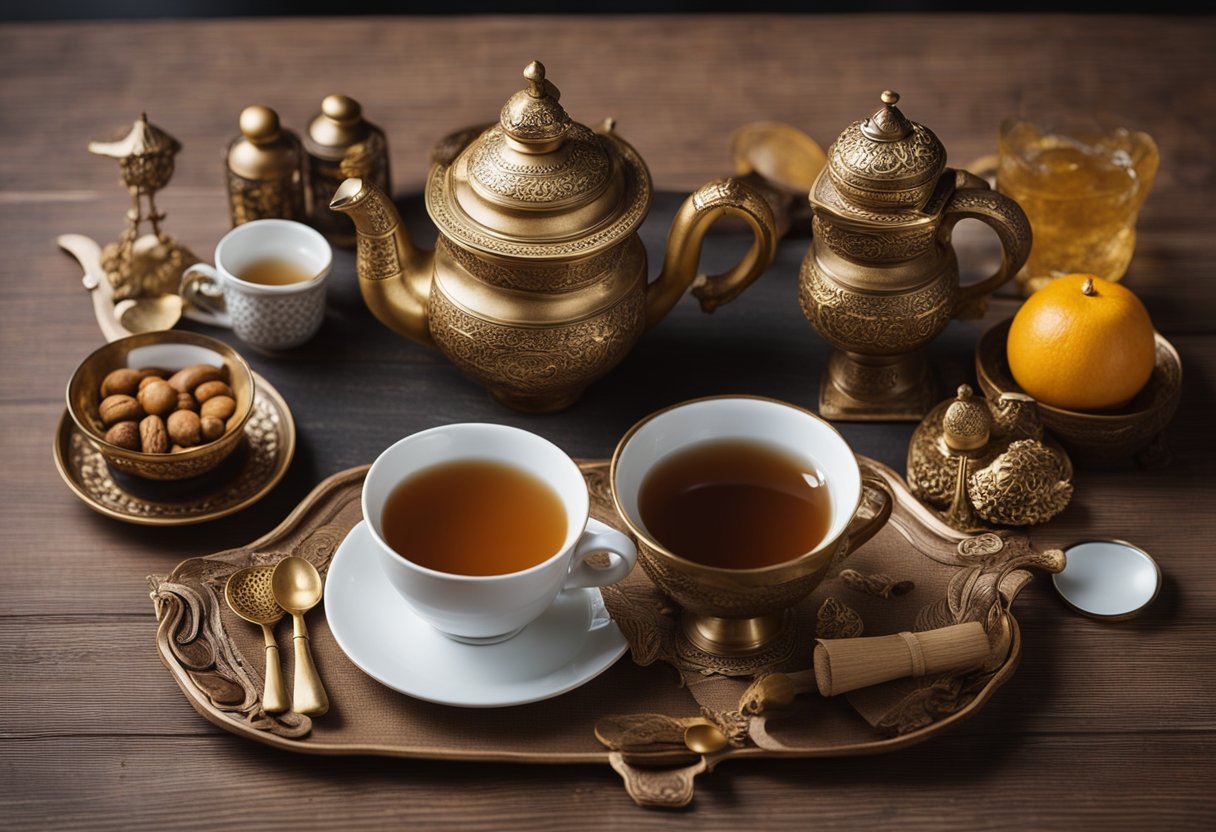
Delving into the core of tea and coffee cultures, we find a rich tapestry of ceremonial origins and rituals that have shaped social practices around the globe.
Ceremonial Beginnings
In the cradle of their respective cultures, both coffee and tea were more than mere beverages; they were integral to tradition and society. Coffee, having its roots in the Ottoman Empire, was consumed within the welcoming confines of the qahveh khaneh. These establishments were social hubs, a sort of public living room where people gathered not just for a drink but for news, debate, and entertainment.
Tea Ceremonies and Coffee Rituals
Turning to the Far East, specifically Japan, the tea ceremony, known as sado or chanoyu, presents a choreographed art reflecting the principles of harmony, respect, purity, and tranquillity. The ritual preparation and consumption of matcha, or powdered green tea, is a mindful practice steeped deep in philosophical and spiritual roots.
In contrast, coffee rituals, such as those in Ethiopia, encompass communal gatherings where coffee is prepared in a ceremonial manner. Beans are roasted, ground, and brewed in a process that fosters social interaction and community bonding. These rituals highlight the cultural significance of coffee as it’s skillfully transformed from a raw bean to the final brew, savoured amongst friends and family.
Evolution of the Coffeehouse
The coffeehouse has travelled a historical journey from being a social hub in the heart of Mecca to becoming an institution of intellectual exchange in Europe, significantly impacting the Enlightenment and the French Revolution.
From Mecca to Europe’s Enlightenment
Coffeehouses first emerged in Mecca during the 15th century, becoming popular centres for conversation, news, and even live entertainment. This concept of a public space for dialogue and socialising over a cup of coffee made its way to Constantinople and gradually throughout Europe. By the 17th century, London’s coffeehouses had earned the moniker “penny universities” due to the penny entrance fee and the rich intellectual discourse they provided. Patrons of various socio-economic backgrounds gathered to discuss literature, science, and commerce, creating a new cultural phenomenon and spreading Enlightenment ideas.
Literary and Political Hub in the French Revolution
In Paris, the coffeehouse culture further evolved. During the French Revolution, coffeehouses became hotbeds for political discussion and revolutionary ideas. Influential figures would converge on Parisian cafés to debate and plan; thus, coffeehouses played a pivotal role in the exchange of radical thoughts that spurred societal changes. The coffeehouse was not merely a place to enjoy a beverage but a significant arena for literary, social, and political transformation in the heart of revolutionary France.
Coffee and Tea in the Americas
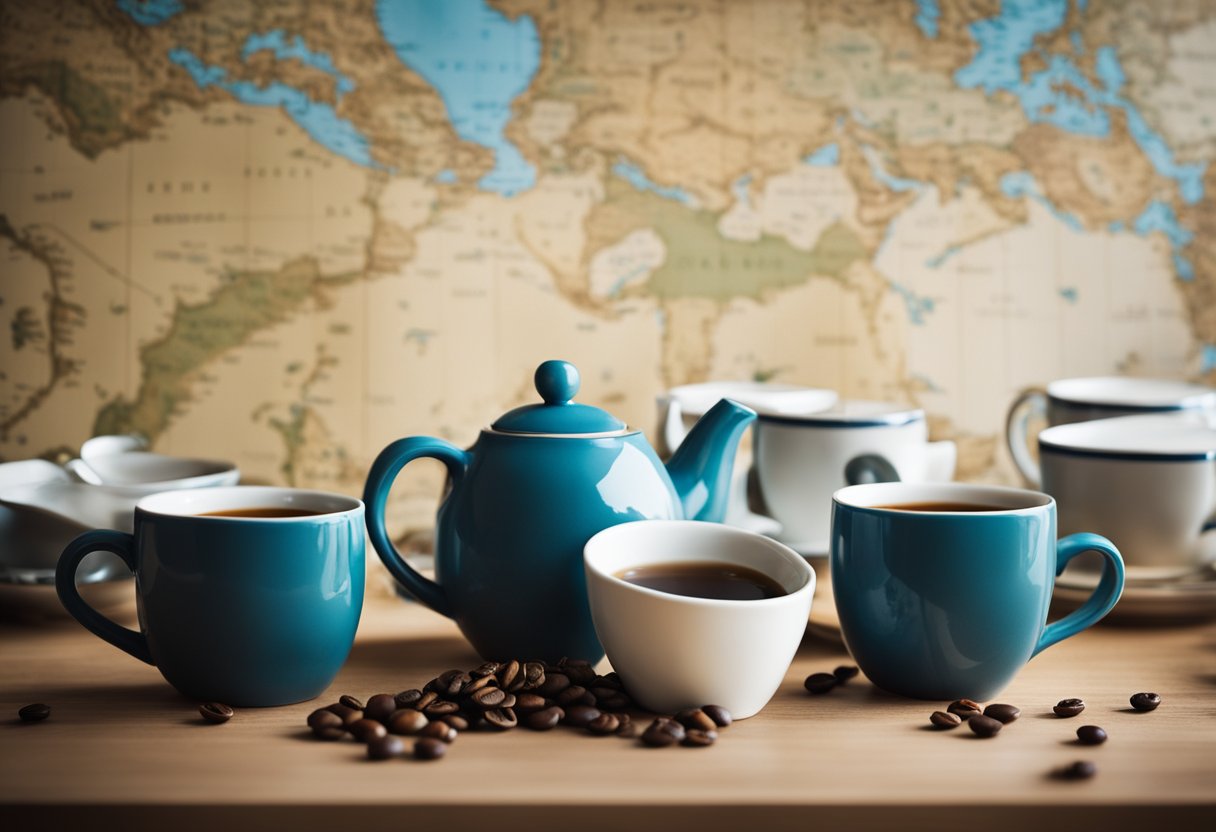
Coffee and tea, integral to social and economic frameworks, have woven their unique narratives across the Americas, markedly influencing the region since their introduction.
Introduction to the New World
Coffee and tea voyaged to the Americas during a pivotal era of exploration and colonial expansion. The exotic allure of these beverages, with their roots in distant lands, captured the fascination of the New World. In the 17th century, coffeehouses began to spring up, creating new social spaces, while demand for these brewed delights surged, leading to the differentiation of rituals around them.
Impact of Coffee on Society and Economy
The introduction of coffee helped forge a distinct coffee culture within the Americas, particularly magnified in nations such as Brazil, which is now a leading producer. With the American Revolution, the preference for coffee over tea became an act of patriotism in the United States. This burgeoning culture further influenced global markets and trade networks, shaping the socio-economic landscapes of entire regions.
The Business of Brews
Within the intricate tapestry of our global economy, the coffee and tea industries emerge as pivotal sectors, shaping commerce and culture alike. Our discussion delves into the core of these industries—their production and trade—to unveil their profound influence on the market.
Coffee and Tea Production
The production of coffee and tea is at the heart of an immense business that extends from the plant to the cup. On coffee plantations, predominantly located in countries within the Bean Belt—like Brazil, which stands as the largest coffee producer globally—cherries are meticulously harvested and processed. Meanwhile, the tea industry thrives in nations such as China and India, where the art of tea cultivation has been refined over millennia.
Speciality coffee, once a niche market, has gained significant traction, pushing the boundaries of quality and taste. Companies like Starbucks have commodified this trend, turning a once-simple pleasure into a sophisticated experience replete with its own vernacular and standards.
Global Trade and the Commodity Market
Coffee and tea are not merely beverages but also heavyweight commodities on the global stage. Trading these goods involves a network of buyers, sellers, and marketers who navigate complex commodity markets. Dramatic fluctuations in prices can impact economies, particularly in countries where these crops are critical for livelihoods.
Starbucks and other enterprises have a dual role in these markets—not only do they contribute to demand, but they also seek to influence the supply chain to secure their business interests. In doing so, they help to shape global trade policies and practices, while speciality coffee producers often strive to bypass these traditional markets to obtain better prices and maintain quality control.
Our focus here underscores the intricate linkage between the cultural tapestry of coffee and tea and the global business dynamics that bring these beloved brews to our tables.
Cafés and Coffee Shops Today
Today’s cafés and coffee shops serve as vibrant social hubs, fostering community connections and redefining the traditional coffee experience. From the presence of global giants like Starbucks to independent boutique cafés, these establishments have become intrinsic elements of urban lifestyle and culture.
The Third Place Concept
The “third place” concept, popularised by Starbucks, refers to a space other than home or work where people can relax and enjoy the company of others. These third places often foster a sense of community and are seen as crucial meeting spots that facilitate social interactions.
Modern Café Culture and Social Spaces
In contemporary café culture, coffee shops act as dynamic social spaces that sometimes replace traditional meeting places. Social media also plays a role, as patrons share their café experiences online, which can influence the popularity and vibe of the café. Independent cafés often emphasise unique decor, artisanal offerings, and quality service to stand out and create a loyal customer base.
Brewing Methods and Innovations
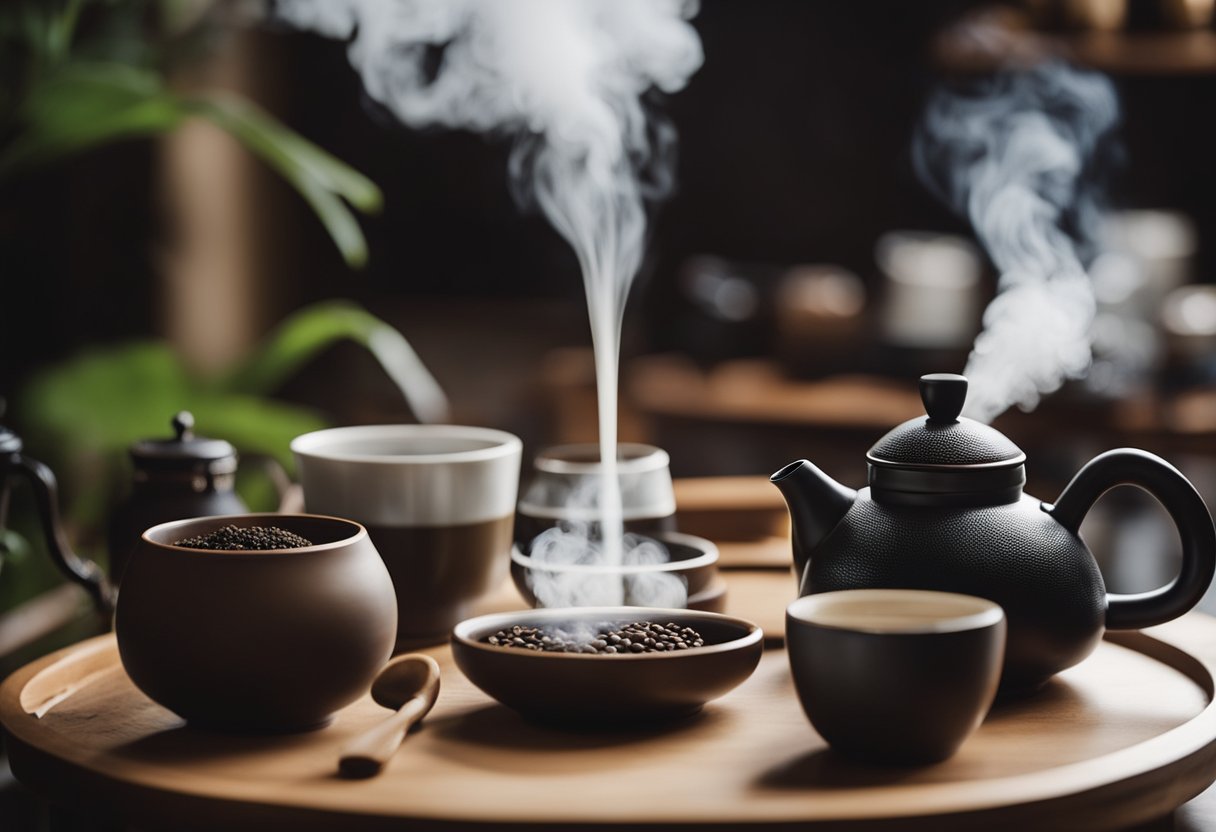
In the realm of coffee and tea, brewing methods are as diverse as the cultures they come from. We see a fascinating range of techniques, from time-honoured traditions to cutting-edge innovations, that continue to shape our experience of these beloved beverages.
Traditional Brewing Techniques
Brewing techniques have been central to the cultural fabric of societies for centuries. The Ethiopian coffee ceremony is a notable example, highlighting the communal aspect of coffee preparation and consumption, where beans are roasted over an open flame, ground by hand, and then steeped in a vessel known as a jebena. Another heritage method comes from the age-old Turkish coffee brewing method, which involves finely grinding coffee beans and preparing them in a special pot called a cezve. This method creates a distinct flavour and texture that’s been savoured for generations.
Across the globe, different cultures have developed their unique approaches to tea brewing as well, often using loose leaves and infusers to allow the leaves to expand and release their full flavour.
Modern Technology in Brewing
Advancements in technology have revolutionised the way we brew coffee and tea, making it quicker and more convenient while also opening up new ways to appreciate these beverages. The advent of the espresso machine has enabled coffee aficionados to enjoy a concentrated beverage that serves as the foundation for a variety of drinks, including the popular latte, which is often adorned with latte art as a testament to the barista’s skill.
For tea enthusiasts and speciality coffee lovers alike, the pour-over is a modern manual brewing technique that offers unparalleled control over the brewing process. By adjusting variables such as water temperature and pouring speed, we can influence the extraction of flavours, leading to a bespoke cup of tea or coffee.
Modern brewers also offer a combination of precision and automation, ensuring consistency and efficiency, whether in a bustling café or a quiet home kitchen. Together, these innovations represent not just a change in how we make our drinks but an evolution in how we engage with the ritual of brewing itself.
Responsible Consumption and Sustainability

As we delve into the coffee and tea industries, we’re met with the critical intersection of responsible consumption and sustainability. It’s a place where ethics and environmental stewardship dictate both the present practices and the future of production.
Ethical Practices in Coffee and Tea Production
Coffee and tea production has increasingly embraced ethical practices, ensuring workers receive fair treatment and compensation. This commitment has seen a rise in direct trade, where businesses engage directly with producers, cutting out middlemen. This not only brings us closer to the source of our beloved brews but also ensures a fairer distribution of income. Moreover, the Fair Trade movement has gathered momentum, championing the rights and sustainability of smallholder farmers’ communities.
Sustainable Development Goals
Aligning with the Sustainable Development Goals, the coffee and tea sectors are transforming towards sustainability. Producers and retailers are working to reduce waste, lower carbon footprints, and improve soil health. For instance, our tea production is shifting towards more sustainable practices with each passing season, such as implementing water conservation methods that benefit both the land and the communities that tend them. We’re witnessing a transition towards more sustainable development in every cup we sip.
Cultural Diversity and Fusion

In exploring the cultural diversity and fusion found in tea and coffee cultures, one discovers a rich tapestry of flavours and traditions. These beverages, deeply entrenched in various heritages, have traversed the globe, adopting new characteristics and blending with local customs to create unique cultural experiences.
Adaptation Across Continents
Tea and coffee have journeyed from their traditional origins, adapting to myriad cultures across continents. In Turkey, coffee is not just a drink, it’s a centuries-old ceremony. Turkish Coffee is famed for its distinctive method of preparation, where the grounds are left in the cup, symbolising a connection to the earth. Chai, originating from India, combines spices such as cardamom and cloves with milk for a flavour-rich experience.
- Flavour Profiles: Each region adds its twist, which can be sweet, spicy, or robust, shaping the global coffee and tea identities.
Global Influence on Local Traditions
As tea and coffee became global staples, they influenced local traditions, creating a new fusion of cultural experiences. In diverse settings, such fusion is manifested in flavour profiles; for instance, bubble tea blends traditional chai techniques with modern tastes, and spiced lattes infuse cardamom or cinnamon into classic coffee preparation.
- Heritage Preservation: Many locales incorporate coffee and tea into their cultural heritage, striving to preserve traditional methods while embracing new influences.
Through this evolution, the diversity of tea and coffee culture is not only preserved but also celebrated as a symbol of our collective heritage.
The Role of Intellectuals and Artists

We find that intellectuals and artists have historically gravitated towards spaces where coffee and tea are enjoyed, fostering environments rich in dialogue and creativity.
Coffee and Creativity
Coffeehouses have long been the favoured haunts of intellectuals and artists, with the stimulating effects of coffee often linked to heightened creative output and literary works. From the traditional coffeehouses in Vienna that were bustling with political thought to the modern cafes where contemporary writers draft their narratives, coffee has helped to shape both the expectant minds of society’s visionaries and bring about tangible cultural movements. In fact, the act of drinking coffee became prevalent among the elite, who advocated for a modern lifestyle, with coffeehouses being favoured by many writers and artists for social gatherings.
Tea and Reflection
Conversely, tea culture has been associated with moments of reflection and intellectual pursuit, especially in the country of origin, China. It provided an avenue for intellectuals to convene, share in tea rituals and engage in philosophical discussions. From private ceremonies to public tea houses, tea has been a central component in facilitating exchanges that have nurtured artistic ideation and intellectual progression. The contribution of tea to culture is significant, as it has played an essential role in people’s lives from ancient times, influencing not only daily routines but also the finer fabrics of societal cohesion.
The Future of Coffee and Tea Cultures
As we look to the future, coffee and tea cultures are poised to evolve under the influence of global trends and the melding of innovation with tradition.
Impact of Global Trends
Global trends are reshaping the way we interact with coffee and tea, not just as beverages but as cultural experiences. As we’ve observed through social media platforms, people around the world are increasingly seeking out unique and authentic café experiences, a trend that often features traditional elements. This global interaction continues to fuel a deeper understanding of the historical significance of coffee and tea.
Technological advancements are also altering how we consume these drinks. Development in supply chain sustainability and innovations in brewing technology means that future generations can enjoy coffee and tea with reduced environmental impact while maintaining high quality.
Innovation and Tradition
Innovation is not replacing tradition; it’s enhancing it. Creative new infusions and recipes are becoming staples in cafés, while the ceremonies that have grounded tea and coffee in their respective cultures are being revived and shared more widely. Could a tech-driven approach make these rituals more accessible or perhaps introduce new ones?
Meanwhile, traditions still thrive within these cultures, with many communities holding onto the ceremonial aspects of tea and coffee consumption. These practices often contribute to our collective heritage, as www.connollycove.com highlights through its expansive cultural explorations.
We’re seeing the past being honoured even as we integrate modern-day conveniences and tastes. For instance, the third-wave coffee movement places an emphasis on artisanal craft and direct trade, marrying the old with the new. Moreover, tea culture is also experiencing a resurgence with a focus on the artisanal, as people appreciate the nuanced flavours and heritage of different tea leaves.
We are confident that the future holds a place for both traditional tea ceremonies and innovative coffee brewing methods, with cultural experiences around these beloved drinks growing richer and more diverse.
Frequently Asked Questions
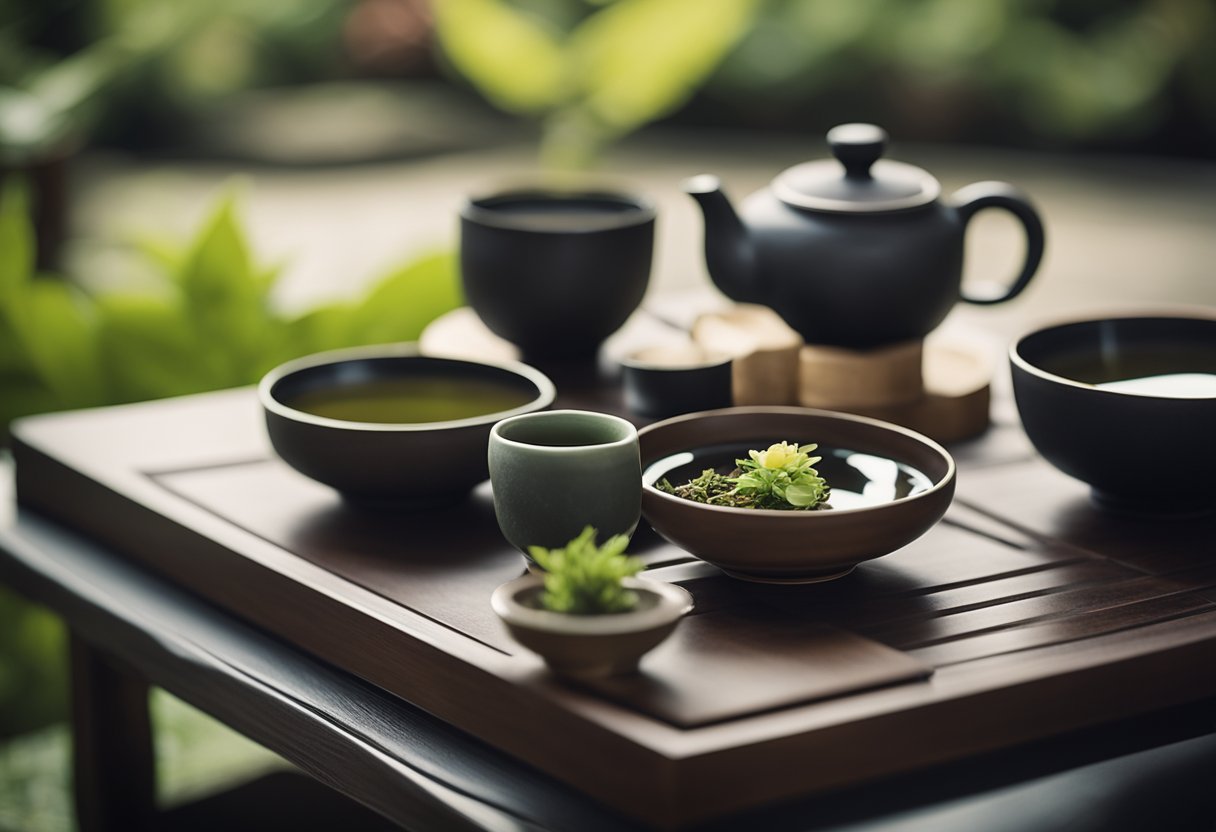
In this section, we address some of the most intriguing enquiries regarding the coffee and tea cultures that have been in existence since ancient times and how they continue to influence our modern routines.
How have traditional coffee ceremonies evolved into the contemporary café scene?
Traditional coffee ceremonies, particularly in regions like Ethiopia, were intricate social events focusing on the preparation, serving, and enjoyment of coffee. These have given way to the vibrant, modern café culture where the emphasis is also on the ambience and connection of the patrons within the space. This transition mirrors society’s evolution towards a fast-paced lifestyle while still trying to retain the essence of communal bonds over a cup of coffee.
What are the historical roots of tea ceremonies and their impact on present-day practices?
The historical roots of tea ceremonies can be traced back to countries such as China and Japan, where they’ve held a meditative and ritualistic significance. Today, these ceremonies impact present-day practices by inspiring mindfulness and respect within tea consumption and influencing the design of tea spaces around the globe, promoting tranquillity and cultural appreciation.
In what ways do various countries around the globe typically enjoy their coffee?
Different countries enjoy their coffee in unique ways, indicative of their cultural nuances. Italians relish their espresso shots, standing at bustling espresso bars for a quick recharge, while Turkish culture favours a stronger brew, often spiced and served in small cups. Each country’s customs reflect its approach to life and the role coffee plays within it.
How did coffee houses originate, and what role have they played in social development?
Coffee houses originated in the Middle East during the 15th century, becoming places for political dialogue, social interaction, and literary and intellectual engagement. Over time, they’ve contributed significantly to social development by serving as gathering spots for community discussions, and artistic performances and as the impetus for the widespread exchange of ideas.
Can you describe the role of coffee in Mexican cultural traditions?
In Mexican culture, coffee often plays a role in social and family gatherings. It’s not just a beverage but a means of hospitality, served during conversations and meals. Especially, ‘Café de olla’, which is traditionally prepared in a clay pot with cinnamon and piloncillo, embodies the warmth and rich flavours beloved in Mexican culinary traditions.
What differences can be identified in the global perceptions and consumption of tea and coffee?
Globally, the perceptions and consumption of tea and coffee vary significantly. Tea is often associated with tranquillity and has strong ties to wellness in cultures like in the UK, where it’s a staple of daily life. Conversely, coffee is frequently linked to energy and productivity, with its appeal spanning from the artisan coffee scenes in Australia to the ubiquitous coffee chains in the United States.






